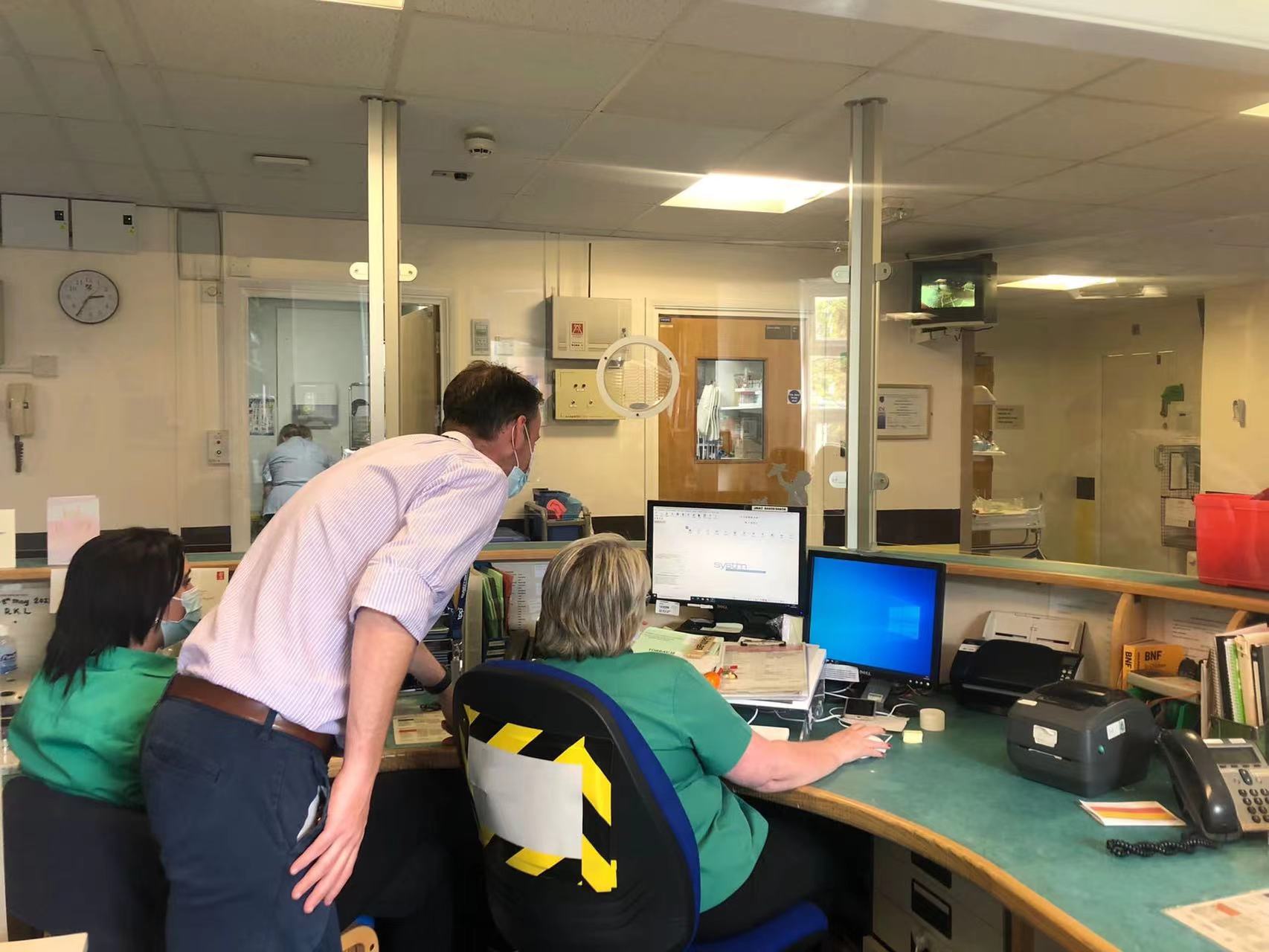On the 16th March 2022, Public Policy Projects (PPP) hosted an evidence session entitled The Social Care Workforce: Averting a Crisis as part of its report series The Future of Social Care. PPP’s Social Care Network examines the most urgent issues facing social care and presents tangible solutions to address workforce challenges in the sector.
The crisis facing the social care sector is fundamentally a workforce one. The sector itself is a large employer in the UK, employing about 1.54 million people, equivalent to five per cent of the workforce. As one participant noted, “the sector itself is a huge contributor to the economy and to society”. Given that staff pay is the single biggest expenditure faced by care homes, workforce management should be front and centre whenever system finances are being considered.
Even before the pandemic, there were about 112,000 social care vacancies in England, with jobs paying only £8.50 an hour. Following the pandemic, the vacancy figures are assumed to be worse. Key issues driving individuals away from working in the social care sector include low pay, stressful working conditions and a low sense of worth.
A participant of the evidence session emphasised that the working conditions of the social care sector have led to 74 per cent of care professionals reporting that they regularly experience stress at work, an average number of sick days 25 per cent above the national average, and a staff turnover rate significantly higher than the national average.
As phrased by one participant, social care is suffering from a “fatigued workforce” not only due to the pressures of the pandemic, but issues which have existed within the sector for much longer. The problems within the social care workforce are chronic , and are considered by many to constitute a crisis. As one participant said, “clearly a workforce strategy is one of the absolute essentials that we need to have to make a success of the sector over the next decade or so”.
“The social care sector should work alongside recruitment organisations to recruit young, bright people into social care, and help them consider where a career may lead.”
One problem identified was narrow recruitment to the sector. It was stressed that within social care, “we should cast our nets wider in a recruitment approach… and recruit not only people with previous experience”. The social care sector should work alongside recruitment organisations to recruit young, bright people into social care, and help them consider where a career may lead.
It was also suggested that more effort must be made to recruit hard-to-reach and underemployed groups, including people living with disabilities, and immigrant workers. “What frustrates me is that there are individuals in these groups who can be wonderful, caring staff [but]are missed, because hiring managers are too narrow in their focus”, said one participant.
Staff retention rates in social care are low. Network members noted that social care workers often leave the sector for other, similarly paid jobs, such as retail roles, while few choose to leave and work for the NHS. One network member identified that “between care assistants in the NHS and the social care sector, there is around a 23 per cent deficit in social care. The terms and conditions are vastly better in the NHS. Pensions, sick pay, overtime and unsocial hours all contribute to that deficit.”
Essentially, social care workers are underpaid and undervalued. For both better recruitment and retention, social care workers must be appropriately paid and treated as though they are valued. Some network members identified low pay as the key driver for individuals choosing to leave the social care workforce, and yet, it was emphasised that social care is a both a skilled and psychologically demanding profession, and should be commensurately well-paid.
However, funding in the system is limited, and paying the workforce is the sector’s single biggest expense. One participant said “there is not a settlement from government or local government that actually meets the cost of care to enable us to pay a proper wage for the level of skill, ability, responsibility, dedication that [care workers] have”. Furthermore, a high proportion of social care workers are on zero-hours contracts; in London, this figure stands at 41 per cent of social care workers. Therefore, many social care workers have to deal with pay inconsistency and insecurity, on top of being low-paid.
“Network members were in agreement that social care is, and should be publicly regarded as, a skilled profession.”
While pay is regularly described as the most pressing issue in the workforce, one participant argued that in their experience of conducting exit interviews with workers, it is not low pay, but rather a low sense of worth which leads people to leave the profession. While higher pay is one way in which care workers can be practically appreciated, it was agreed that more must be done to value care work both by improving the public image of care workers and ensuring that internal structures provide support and give value to workers.
Network members were in agreement that social care is, and should be publicly regarded as, a skilled profession. “It is not the kind of job that everyone can do,” said one participant. “It is a skilled job, which requires the creation of quality human relationships and working with people who have complex care needs… it is a real skill and should be regarded as the same as working in health.”
Social work is challenging and worthy of respect, all participants agreed. One commented that “no two days in social care will be the same; you have to be agile and move with that, so it does take very special people to take those roles”. The public status of social care work must be elevated to reflect this, and the workforce to feel appropriately valued if these retention issues are to be effectively addressed.
Securing an integrated future
For a supported workforce, good leadership is essential. One participant noted that in the social care system “there is a varied approach to leadership”, and good leadership is not always evident in the system. Given the demanding nature of social care work, it is essential that carers feel well supported in their roles. One participant added that “workers do not stay because of a good job, they stay because of a good manager”, and therefore, proper leadership training must be a central goal of the workforce plan.
A practical solution suggested by one of the network members to combat low recruitment, retention and the poor image of the profession was a ‘social-care-first’ scheme, mirroring the successful teach-first scheme. Many other sectors have emulated the ‘teach-first’ template with great success. The aim of the scheme is to engage with young people to consider social care work as a career by espousing the value of a career in care. Such a scheme would emphasise how care work has the potential to transform the lives of dependent individuals, and the importance and value in building personal relationships with system users, improving the image of the profession. As part of the scheme, there should also be structured leadership, coaching and mentoring training, for the purpose of also transforming the quality of social care. This may serve to solve some of the leadership issues in the sector, as young and bright individuals will be well trained to manage and lead social care in the future.
Now that the NHS and social care are moving towards integration, participants noted that for a true and fair integration of the systems, employees should be paid and treated equally. One participant called for a joint recruitment scheme for the NHS and social care, with equal pay offered. It was also emphasised that NHS workers receive many ‘perks’, particularly since the start of the pandemic, which social care workers do not (including food and drinks discounts from certain companies).
Other suggestions to aid the integration of the NHS and social care workforce included social care placements and secondments for NHS staff, in which they are exposed to social care, and the richness and value of social care work. The status of care work must be elevated for proper integration of the two systems can occur, in order that social work and NHS work can be equally respected.
A large part of the discussion focused on the role of volunteers within the social care sector, and the value they bring to both paid carers and system users. Volunteers are an invaluable part of the social care workforce given that they reduce pressure on care workers, improve patient experiences, facilitate higher quality of care to drive better health outcomes, and strengthen community connections. One participant said that in the context of social care, “volunteering is a public health tool. There is a body of medical research which talks about the huge benefits for mental health and physical wellbeing for patients”. Volunteers also serve to raise the visibility of the social care sector.
Since the start of the Covid-19 pandemic, the UK has seen an unprecedented rise in the numbers of people volunteering in their local communities. During the pandemic, the UK had 12.4 million people volunteering in their local communities. 4.6 million of these were first-time volunteers. Currently, the UK has a window of opportunity to make the most of the interest in volunteering to reduce the immense pressure on care workers.
As part of the workforce strategy, there needs to be investment to drive the volunteer sector, for the wellbeing of the social care system and its users. However, time is undoubtedly of the essence; as one participant emphasised, “there is an urgency to the conversation we are having. As Covid dissipates, what we don’t want is for people to go back into the corners of their community and not come out again to contribute.”







